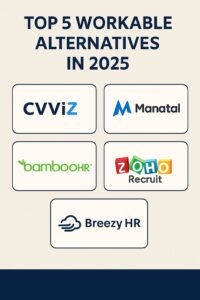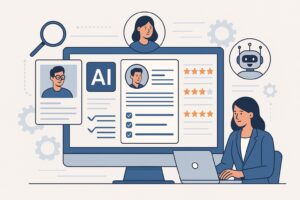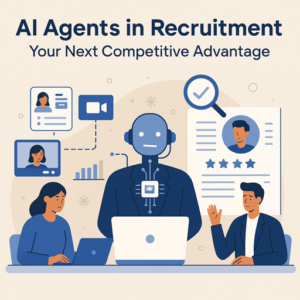In 2008, Toyota pipped General Motors to become the “World’s largest automaker”. Before Toyota, GM had held this title since 1931. Toyota Production System(TPS) is what helped Toyota to achieve this feat. TPS is also referred to as “Lean Manufacturing”. The main aim of Lean Manufacturing is to eliminate waste and to improve continuously. Lean manufacturing is a regular practice in Japan for more than 50 years.
Waste is any activity that adds no value to the overall process. Toyota identified 7 types of wastes in their process which also includes overproduction and waiting. The idea is that production should be just in time. Meaning, the end product should be available just in time when the demand arises.
So what lean manufacturing has to do with recruitment?
What is Lean Recruitment?
Just like manufacturing, recruitment is also demand and supply. Companies always require new people as the new job positions open up. That is, there is always a demand for new people in the company. Recruiters work on finding new people using various channels. So, essentially recruiters take care of the supply side of the recruitment. We can easily extend principles of lean manufacturing to recruitment and call it lean recruitment.
If there is an imbalance between demand and supply it leads to various losses, such as delay in completion of work, loss of productivity, more work for other team members, additional work pressure, etc. This holds true in the world of manufacturing and recruitment.
The other way to look at lean recruitment is the ability to hire just in time. Consider it as proactive hiring. Most companies use reactive recruitment practices. It means, companies start their recruitment process only after there is a new job opening. In a reactive approach, there is always high pressure on both hiring managers and recruiters to close positions. This many times leads to bad hiring decisions.
Lean recruitment is about anticipation. You stay ahead of curve and start planning much early, even before the new position is created.
How To Start With Lean Recruitment?
Being “Lean” is about anticipation, waste elimination, and continuous improvement. In order to implement lean recruitment model you first need to –
- Identify the areas where you can eliminate or reduce waste. Look into various aspects of the recruitment process such as candidate sourcing, resume screening, interview scheduling, job offer management, etc. Review various activities and identify what causes delays or the activities that do not add value to the overall recruitment process. In traditional reactive recruitment model, manual tasks such as filling up recruitment trackers, multilevel resume screening, low-quality candidate sourcing, coordinating with hiring managers takes away a lot of time without adding much of a value.
- Identify the areas you need to improve. Generally, recruitment teams struggle when there is high volume hiring. This happens because of the reactive recruitment models. If you prepare ahead of time, you should be able to anticipate the high volume recruitment. Using recruitment analytics and looking into your past recruitment data you should be able to predict what kind of positions you would be hiring for in the future.
- Help your recruiters and hiring managers to work more efficiently. Toyota focused on how people use technology and how they can add value to the organization.
How To Implement a Lean Recruitment Model?
As we discussed so far, Lean Recruitment is about anticipation, adaption, waste elimination, and empowering your people. Recruitment automation or recruitment technology is the most important factor that will help you in implementing the Lean Recruitment model.
Eliminate Waste Using Recruitment Automation
As we discussed, the key is to eliminate waste at every stage of recruitment. Use recruitment software like Online Recruitment Software, or CRM that could automate most of the manual work.
- Use employee referral, career page integration, job board integration, Google for job search, social media for candidate sourcing. Integrating these sourcing channels with recruitment software will help you, source candidates, automatically. Recruiters will not have to spend too much time sourcing candidates. Also, avoid using job boards that do not offer quality candidate profiles. Sometimes companies go for such kind of job boards because they offer a cheaper subscription.
- Automate prescreening of candidates. When candidates apply for the job positions, let them fill in answers to the prescreening questions. This way recruiters do not have to phone screen candidates separately. Also, candidates that apply for the job are qualified leads. It means they have confirmed their interest in the job and in the company.
- Automate resume screening process. With the recent advancement in the recruitment industry, you could leverage AI for resume screening. AI recruiting software can help you, screen candidates, just like the domain expert. It will help you in finding the right candidates for the right job.
- Similarly, interview scheduling, emailing, employee on-boarding can be automated.

Even simple automation like auto emails, exporting recruitment trackers, building reports can save a lot of manual efforts and time.
Capacity Planning For Forecasting
The best way to be ready for any kind of situation is to plan ahead. Recruiters and hiring managers should work together on capacity planning. Use data from previous years or quarters to forecast the kind of people you need to hire in the near future. Find out the number of people you need in the following months. This is what we call proactive recruitment.
When you use proactive recruitment you start building talent pipelines for the roles that you are going to hire for in the future. This way you do not have to struggle for finding people. You can find people just in time.
There are times in the year when the attrition rate is high. A company needs to hire more people than they planned for. Using recruitment analytics will help you predict such a situation.
Using recruitment technology helps you both ways. It helps you to prepare for odd situations and it also helps you to get through it with intelligent automation.
Focus On People
As you progress through lean recruitment you would start saving time for your recruiters and hiring managers. It would help recruiters in engaging more and more qualified candidates for multiple positions.
The company’s success depends on its people. When people spend the most time doing what they love most they are happy and productive. They also get creative. They can come up with more innovative solutions that could help companies in hiring the best talent. For example, we see many networking events in the form of Hackathons or boot camps which help companies in identifying top talent. Companies organize such events to build talent pipelines.
If you are following traditional reactive recruitment practices then you may find it difficult to implement a lean recruitment model. The best way to initiate into the lean model is by adapting to recruitment automation which should help you eliminate waste from your hiring process. After that, just like how Toyota did, you will have to make sure people adapt to technology. Once these things are in place, it will help recruiters in saving time and them more focused on things they love, engaging candidates, and hiring the best talent.




